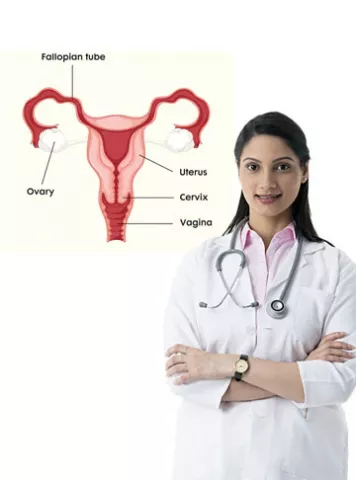Transport of embryos and gametes ( sperm and ovum) along the fallopian tube needs a complicated and timed interaction of various factors. Fallopian tubes are tubular structures attached to uterus at one end and other end situated near ovary. It helps in picking the ovum from fimbrial end, transport and maturation and storage of sperm, fertilization of ovum with sperm and formation of embryo and finally transport of embryo to uterus. To understand the tubal transport of embryo and gamete, we should know the tubal structure and how it works.
Fallopian Tubes
Fallopian tubes consist of four segments, each have different role in fertilization and successful pregnancy. Segments from lateral to medial side includes :
1st part – there are approximately 25 finger like projections known as the fimbriae. Fimbriae at this end help in picking up the ovum,
2nd part – major portion of tube where fertilization of ovum and sperm occur,
3rd part – common site for ectopic pregnancy and
4th part – here tube enter into uterus and transport embryo from tube to uterus.
Fallopian tubes consist of mainly 2 types of cells which include Cells with ciliary activity-Cilia are hair like structures which helps in movement of gamete and embryo. And another type is cells with secretory activity- these cells , secrete tubal fluid which help in transport and nutrition of embryo and gametes.
Tubal epithelium changes under effect of the hormones secreted by ovaries. So in earlier phase of menstrual cycle there are more number of ciliated cells while in later phase there are more number of secretory cells.
A lot of factors affect tubal transport which include hormonal signals, nervous input with ciliary motility, muscular contractility, tubal fluid, ovarian hormones and follicular fluid.
Various hormonal and neuronal factors affect ciliary activity and frequency of ciliary movement. Ovarian hormones and other bio-active compounds also play important role. Ciliary projections are the most important for movement of egg and sperm. Many diseases affect these cilia and if they are damaged though the tubes are open but can’t give pregnancy.
There are two types of contraction in Fallopian tubes which includes:
1st Continuous contraction which works as functional gate between uterus and tube which allow passage of gametes and embryos only when there is optimal condition on either side. It also prevents polyspermy that means entry of multiple sperm by limiting the rate of sperm release into the ampulla.
2nd type of contraction is Frequent intermittent contraction which causes propulsion of tubal fluid and also helps in ovum pickup.
Tubal fluid is secreted by secretory cells of tubal lining which is composed of few bioactive compounds which affect ciliary activity and muscular contractility. It is rich in potassium, bicarbonate and few important bioactive compounds. Glucose concentration varies according to phase of menstrual cycle. Maximum tubal fluid forms during midcycle. It also helps in nutrition of gamete and embryo.
Diseases and conditions which affects tubal transport-
Endometriosis is a condition where inflammatory chemicals released due to the disease process cause decrease in frequency of ciliary movement and abnormal tubal movement. Scarring of tube may prevent the natural fertilization and transport of gamete and embryo.
Smoking alter tubal motility, decrease frequency of ciliary movement and tubal blood flow. PID and infections like Gonorrhoea, Chlamydia, tuberculosis etc. and congenital diseases like immotile cilia syndrome also affect tubal transport.
For spontaneous conception, it requires coordinated and regulated transport of gamete and embryo through tubes and maturation of sperm, oocyte fertilization and initial embryo development.
So a patent tube with normal lining and normal function of cilia and contractility with normal tubal fluid secretion is required for successful pregnancy. When any of the above mentioned components is dysfunctional, spontaneous pregnancy is difficult but possible with the help of in vitro fertilization.
Articles
2022


Infertility Tips Fallopian Tube
Can Pregnancy Occur With One Ovary And One Fallopian Tube ?
Uterus is connected to two ovaries by a pair of muscular tubes called fallopia...
2022


Fallopian Tube Infertility Tips
Blocked Fallopian Tubes
Blocked Fallopian Tubes: Causes, Symptoms And Treatment blockage in Fallopi...
2022


Fallopian Tube Infertility Tips
How to Problem with the Fallopian Tubes Affects Fertility
Fallopian tube and fertility Fallopian tubes are part of female reproductiv...
Pregnancy Calculator Tools for Confident and Stress-Free Pregnancy Planning
Get quick understanding of your fertility cycle and accordingly make a schedule to track it
















